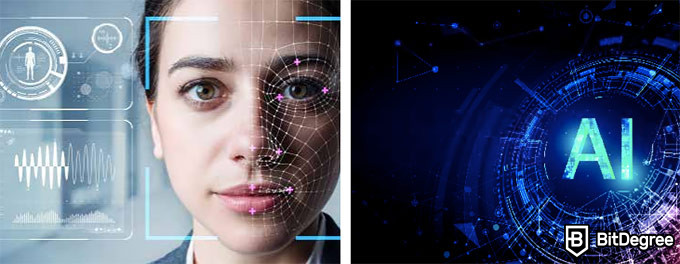
Intelligent Augmentation uses artificial intelligence and machine-learning to enhance human capabilities. This type is easy to program, engineer, and use for a variety tasks. When programmed and designed well, an intelligent augmentation can be a useful employee and confidante. Intelligent augmentation has many potential uses.
Machine learning
Intelligent augmentation is a technology that supports the cognitive functions of human beings. This technology has made many jobs simpler. This technology is based on machine learning and artificial intelligence. Intelligent augmentation is not AI. It's designed to replace human workers. However, it uses machine learning alongside humans to improve the workplace.
Deep neural learning
Deep neural networks (DNNs) are neural networks that use feedforward learning to compute patterns and predictions. They map a network that contains virtual neurons and assign weights. The inputs and the weights are multiplied to get a final output. The algorithm might adjust the weights in order to make certain parameters more prominent or better recognized. It also determines which mathematical manipulations to apply to process the data. DNNs are useful for many applications, but they also have a few problems.
Exoskeletons
Researchers must consider the ways exoskeletons can be used to assist people with mobility impairments in order to decide if they are suitable for rehabilitation. This research is focused on robotic exoskeletons. These devices can aid in motor function and strength recovery. They are also able to track their movement and adapt to changing conditions.
AI at the workplace
Digital automation and intelligent augmentation in the workplace are transforming the way people work, and will reduce the need for employees in some roles and increase demand for other positions. One obvious growth area will be in training and deploying AI systems for unique business contexts. These individuals will need to supervise AI teams, address errors, and perform quality control.
Human augmentation
Human safety is one of the biggest challenges in intelligent human augmentation. Risks associated with human augmentation include fatalities and serious injuries. Ford's exoskeletons can be harmful to the employees' health. The human brain is also extremely susceptible to strain. Human augmentation technology therefore must be carefully evaluated. The testing of human augmentation technology is currently complicated. Neuralink, a company that develops brain implants for humans, is using animals to test its chips. Others, such as University of California Devis have faced legal action for animal abuse.
FAQ
What is the future of AI?
The future of artificial intelligence (AI) lies not in building machines that are smarter than us but rather in creating systems that learn from experience and improve themselves over time.
This means that machines need to learn how to learn.
This would mean developing algorithms that could teach each other by example.
You should also think about the possibility of creating your own learning algorithms.
It's important that they can be flexible enough for any situation.
How will governments regulate AI
Governments are already regulating AI, but they need to do it better. They should ensure that citizens have control over the use of their data. Aim to make sure that AI isn't used in unethical ways by companies.
They should also make sure we aren't creating an unfair playing ground between different types businesses. Small business owners who want to use AI for their business should be allowed to do this without restrictions from large companies.
AI is used for what?
Artificial intelligence (computer science) is the study of artificial behavior. It can be used in practical applications such a robotics, natural languages processing, game-playing, and other areas of computer science.
AI is also known as machine learning. It is the study and application of algorithms to help machines learn, even if they are not programmed.
AI is being used for two main reasons:
-
To make your life easier.
-
To be better at what we do than we can do it ourselves.
A good example of this would be self-driving cars. We don't need to pay someone else to drive us around anymore because we can use AI to do it instead.
Statistics
- More than 70 percent of users claim they book trips on their phones, review travel tips, and research local landmarks and restaurants. (builtin.com)
- By using BrainBox AI, commercial buildings can reduce total energy costs by 25% and improves occupant comfort by 60%. (analyticsinsight.net)
- A 2021 Pew Research survey revealed that 37 percent of respondents who are more concerned than excited about AI had concerns including job loss, privacy, and AI's potential to “surpass human skills.” (builtin.com)
- That's as many of us that have been in that AI space would say, it's about 70 or 80 percent of the work. (finra.org)
- In 2019, AI adoption among large companies increased by 47% compared to 2018, according to the latest Artificial IntelligenceIndex report. (marsner.com)
External Links
How To
How to setup Siri to speak when charging
Siri can do many tasks, but Siri cannot communicate with you. This is because your iPhone does not include a microphone. Bluetooth is a better alternative to Siri.
Here's how you can make Siri talk when charging.
-
Select "Speak when Locked" from the "When Using Assistive Hands." section.
-
To activate Siri, press the home button twice.
-
Siri will respond.
-
Say, "Hey Siri."
-
Say "OK."
-
Tell me, "Tell Me Something Interesting!"
-
Say, "I'm bored," or "Play some Music," or "Call my Friend," or "Remind me about," or "Take a picture," or "Set a Timer," or "Check out," etc.
-
Speak "Done"
-
Say "Thanks" if you want to thank her.
-
If you're using an iPhone X/XS/XS, then remove the battery case.
-
Insert the battery.
-
Place the iPhone back together.
-
Connect the iPhone to iTunes
-
Sync your iPhone.
-
Set the "Use toggle" switch to On